Abstract
This is a report on three cases of acute haemolytic disease in glucose-6-phosphate dehydrogenase (G6PD) deficient workers exposed to trinitroluene (TNT). The courses of the haemolytic crises have several features in common, the most striking being the onset of the disease within two to four days after the start of exposure, and the fact that this has been the first and so far the only haemolytic episode in their lives in spite of detailed medical records of past diseases, injuries, and medications during 12 to 16 years preceding the haemolytic crisis and five to nine years following the disease. The lowest haemoglobin levels for the three patients were 4-0, 6-8, and 8-2 g/dl respectively; haematocrit values were 17 and 24%; reticulocytes rose in case 1 to 26-2%, in case 2 to 26%, and in case 3 to 10%. Indirect bilirubinaemia was increased in two patients (5-1 and 2-6 mg/100 ml) and stercobilinogen was as high as 2150 mg/24 hr in one patient. The presence of the metabolite monoamino 2-6 dinitrotoluene was proved in the urine of case 3 and reached 21 gamma%. The possibility of a dose-response relationship is briefly discussed and the risk of exposing G6 PD individuals in chemical processes is mentioned.
Full text
PDF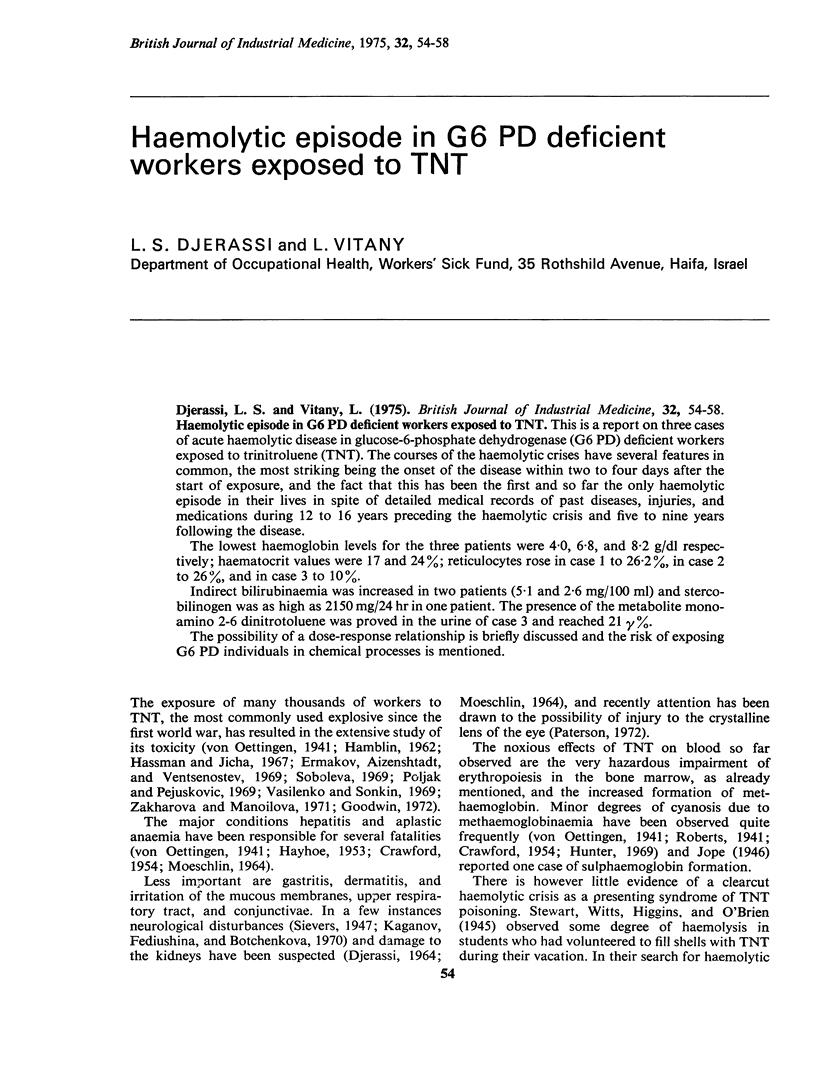
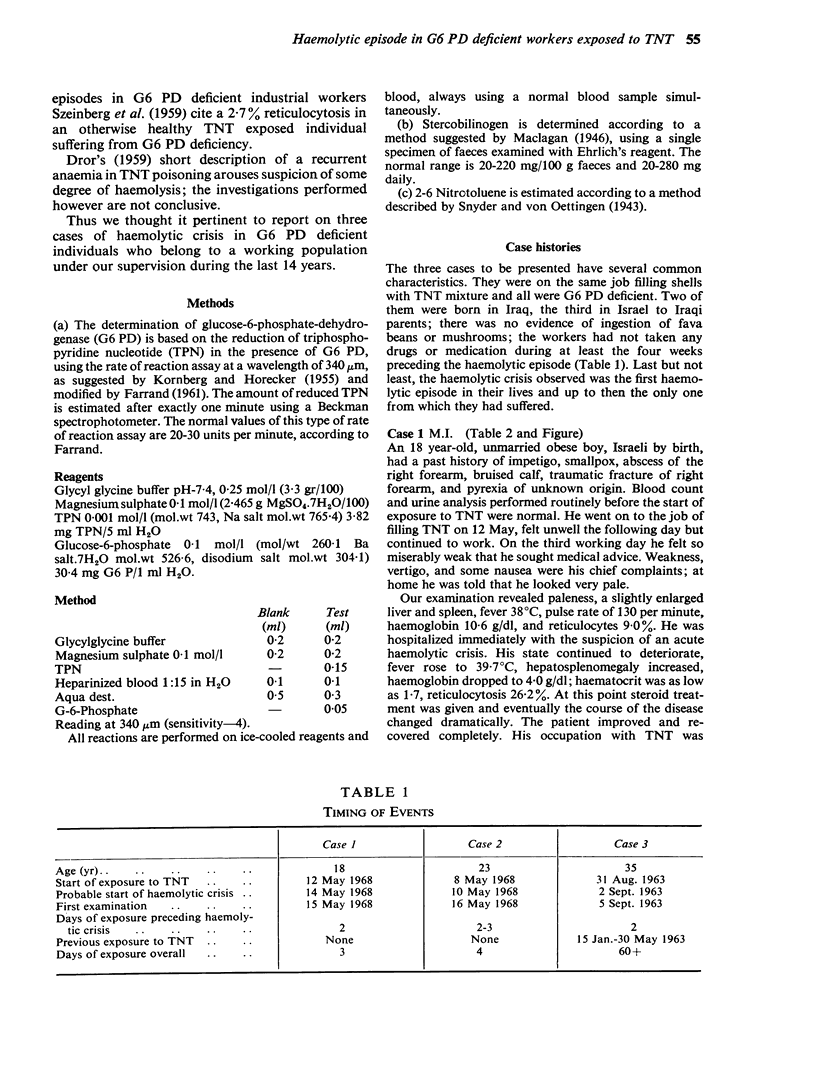
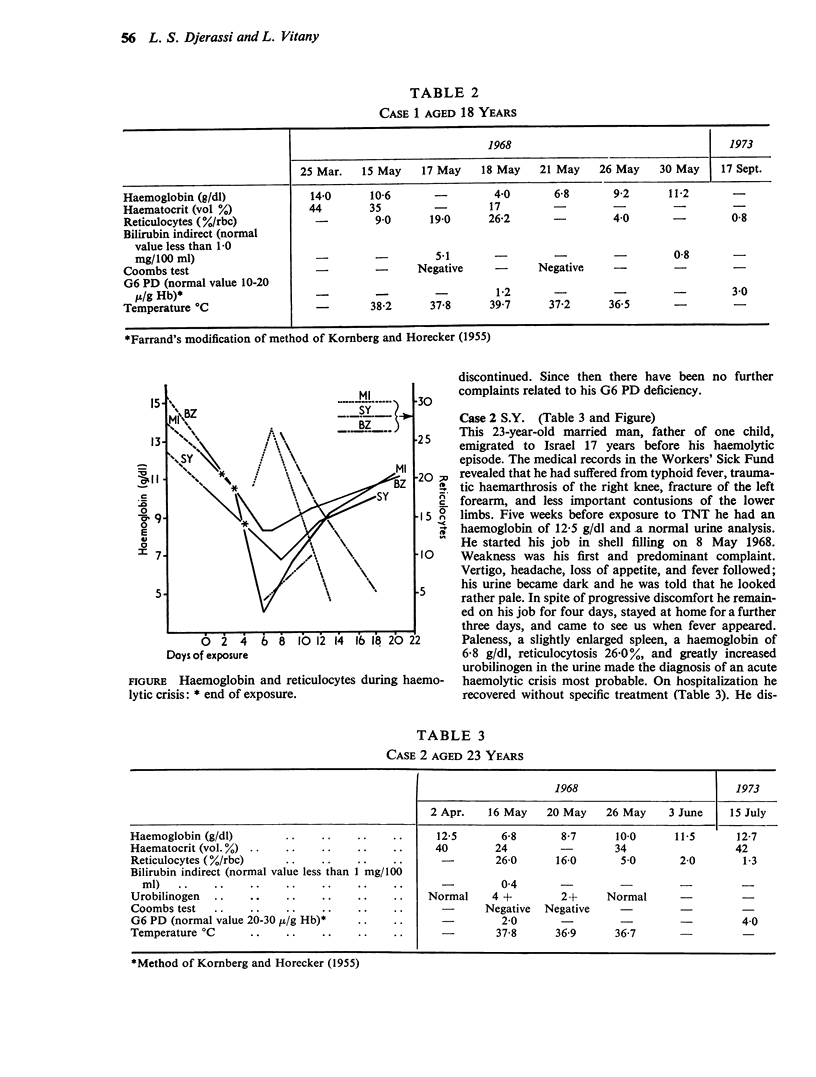
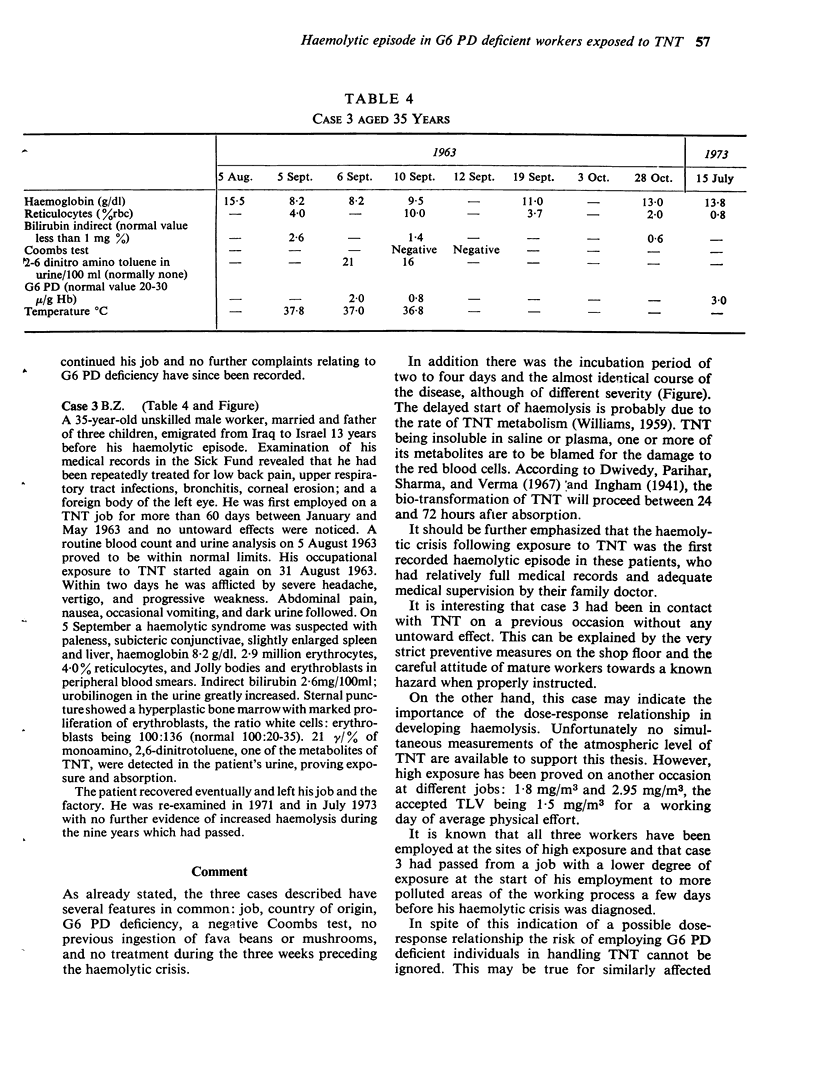
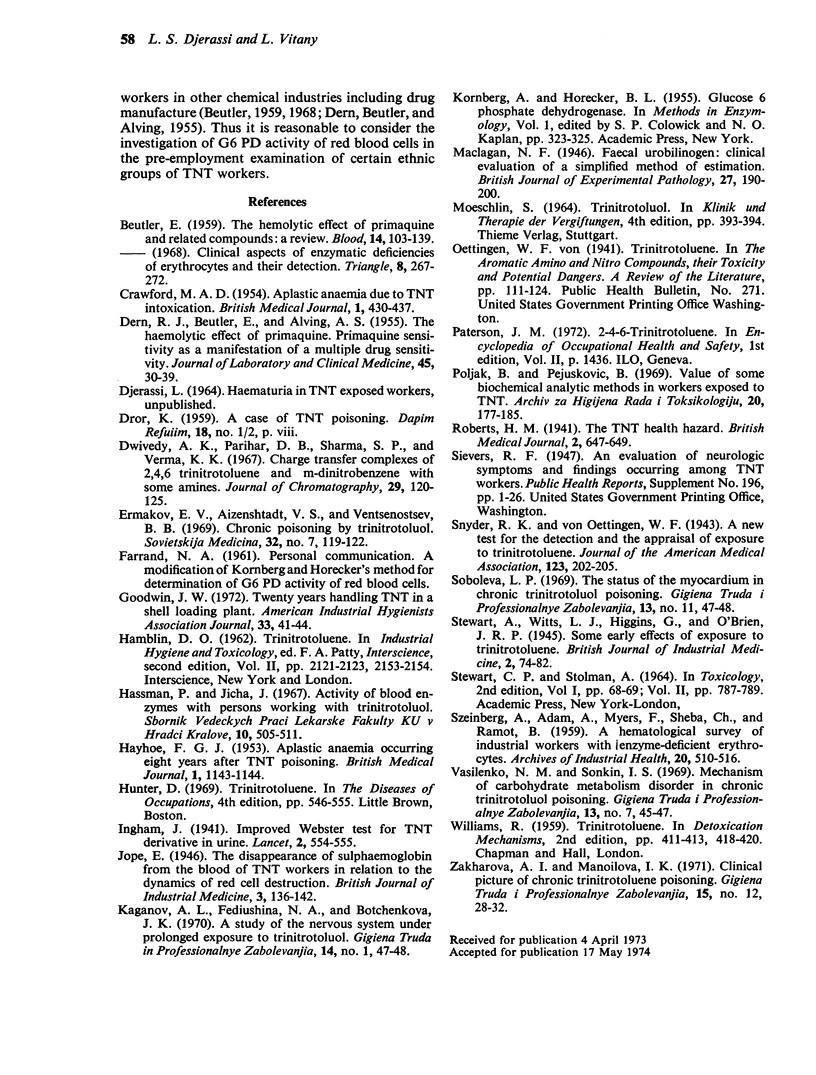
Selected References
These references are in PubMed. This may not be the complete list of references from this article.
- BEUTLER E. The hemolytic effect of primaquine and related compounds: a review. Blood. 1959 Feb;14(2):103–139. [PubMed] [Google Scholar]
- CRAWFORD M. A. D. Aplastic anaemia due to trinitrotoluene intoxication. Br Med J. 1954 Aug 21;2(4885):430–437. doi: 10.1136/bmj.2.4885.430. [DOI] [PMC free article] [PubMed] [Google Scholar]
- DERN R. J., BEUTLER E., ALVING A. S. The hemolytic effect of primaquine. V. Primaquine sensitivity as a manifestation of a multiple drug sensitivity. J Lab Clin Med. 1955 Jan;45(1):30–39. [PubMed] [Google Scholar]
- Dwivedy A. K., Parihar D. B., Sharma S. P., Verma K. K. Charge-transfer complexes of 2,4,6-trinitrotoluene and m-dinitrobenzene with some amines. J Chromatogr. 1967 Jul;29(1):120–125. doi: 10.1016/s0021-9673(00)92636-0. [DOI] [PubMed] [Google Scholar]
- Goodwin J. W. Twenty years handling TNT in a shell loading plant. Am Ind Hyg Assoc J. 1972 Jan;33(1):41–44. doi: 10.1080/0002889728506605. [DOI] [PubMed] [Google Scholar]
- HAYHOE F. G. J. Aplastic anaemia occurring eight years after T.N.T. poisoning. Br Med J. 1953 May 23;1(4820):1143–1144. doi: 10.1136/bmj.1.4820.1143. [DOI] [PMC free article] [PubMed] [Google Scholar]
- SZEINBERG A., ADAM A., MYERS F., SHEBA C., RAMOT B. A hematological survey of industrial workers with enzymedeficient erythrocytes. AMA Arch Ind Health. 1959 Dec;20:510–516. [PubMed] [Google Scholar]


